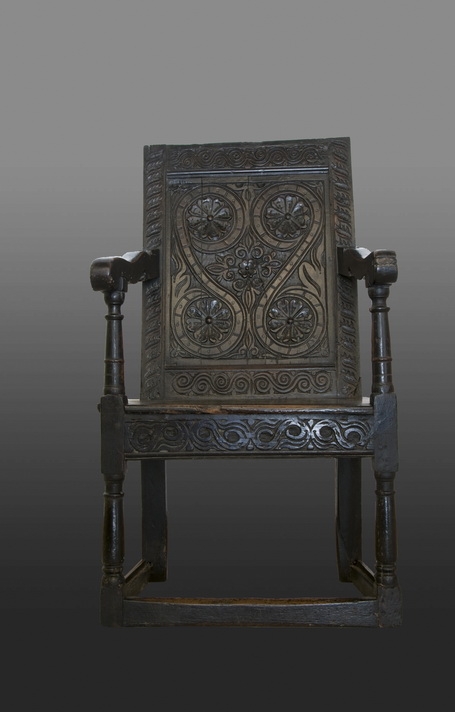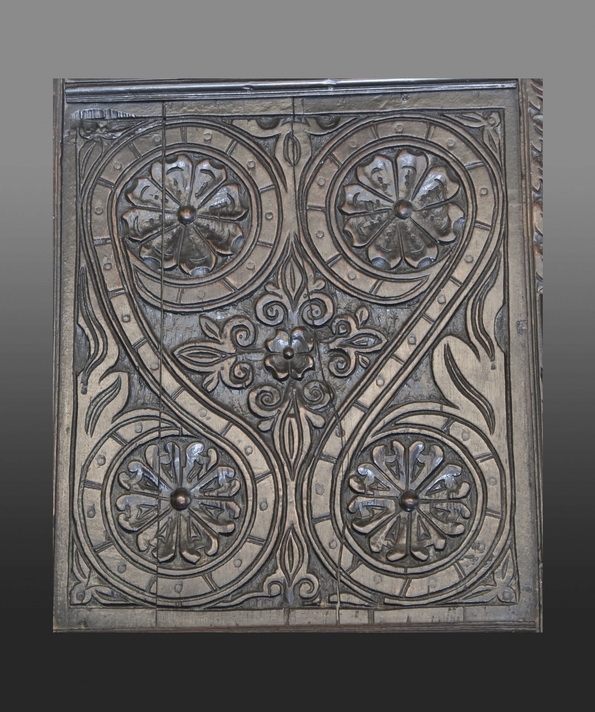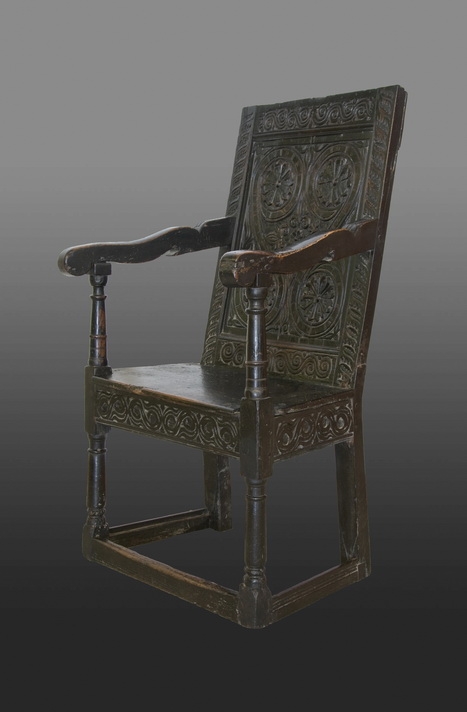Charles II East Devon armchair
Circa 1670
Exeter, Devon
W 23.5" × H 40" (seat height 16.5") × D 22"
Stock # Ex chair
SOLD
This great chair stands as one of only a small number of surviving examples of joined seating furniture produced by one of the three workshops joiners workshops in Exeter that represent the direct contemporaries of the Dennis Shop in Ipswich, Massachusetts. Aside from a grainy image in an old reference book and a handful of pieces which reached the auction market unrecognized and have since disappeared, this object constitutes the only evidence of the of the types of chairs designs employed by later seventeenth-century Exeter joiners. Only the two great chairs made by Thomas Dennis for personal use and subsequently descended in the Dennis family (Bowdoin College Museum of Art and Essex Institute) are known to the academic community. This Exeter-made chair exhibits a number of key traits that resonate with the working habits of all three identified latter seventeenth-century Exeter joiners workshops. Careful examination reveals the chair to be the work of the same shop and, perhaps, the same artisans responsible for cat. 9. As in all post-1660 Exeter joined furniture, the timber (deep reddish-brown coloured local oak) is of poor quality and used with extreme parsimony – this is consistent with the depleted condition of the Citys timber source by the 1600s. All framing members are perilously thin. The side stretchers are cut with an anomalous rebate on their upper edges that indicates they were originally intended for a different purpose and were salvaged for this current use. Revealingly, the faces of those stretchers are run with courses of the V-V-ogee moulding characteristic of the work of Thomas Dennis and his Exeter predecessors and contemporaries. The carving is even more telling. Sequences of stylised alternating s-scrolls carved on the chairs seat rails are repeated almost exactly on seat rails of one of the two chairs made by Thomas Dennis and, in a slightly modified form, on the front rails of cats.13-15. The back panel is essentially an elaborated version of the large s-scroll motif that occupies the front panels of cat. 9 and the related chest with two drawers constructed by the same shop. This pattern varies primarily in the inclusion of three-dimensionally modeled flowerheads similar to those carved on the top front rails of cats. 6-7. The final link between this chair and the Exeter workshop in which it was made is the distinctive form of linked s-scrolls carved on the its back rails half s-scrolls which transition into pendent leaves. This patterns appears with only minor differences on the fronts rails of cat. 9 and the cognate chest with two drawers.
Condition Notes
Rear stretcher lost; some old repairs to stiles and joints of stretchers and seat rails.


